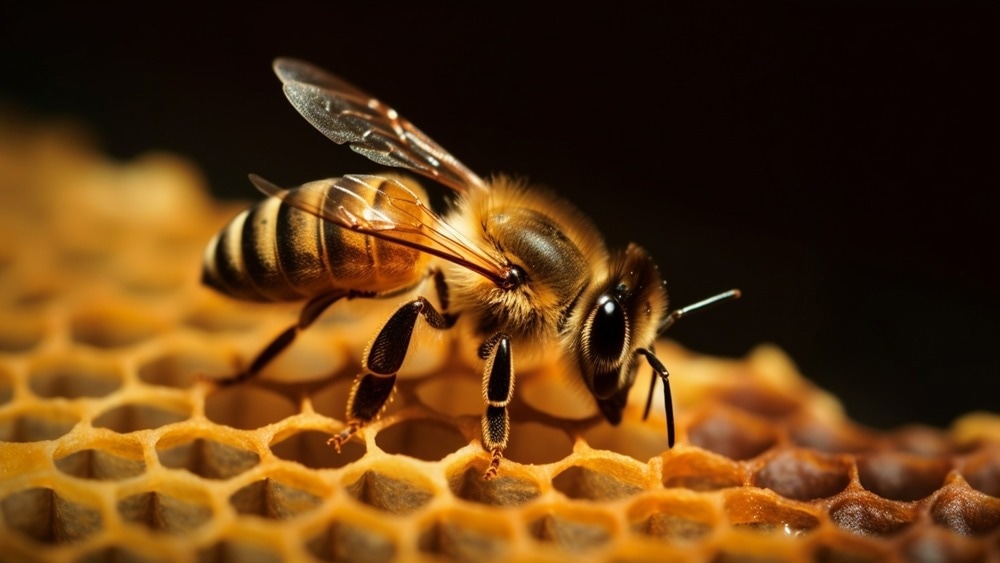Reviewed by Danielle Ellis, B.Sc.Nov 6 2023
A centralized tool named BeeBCD has emerged as a powerful solution for addressing substantial gaps in public bee data, particularly from regions like Africa and Asia, which have been underrepresented.

Image Credit: Donamen/Shutterstock.com
Detailed in a recent article published in the journal Nature, BeeBCD consolidates over 18 million records of bee occurrences from various public and private databases.
This consolidation enhances the accuracy and accessibility of global species data, providing valuable resources for future conservation efforts, research ventures, and agricultural management.
According to Dr James Dorey, a bee expert from Flinders University and the lead author of the article in Scientific Data, this rationalized bee occurrence dataset will not only benefit plant and crop production in the future but also play a crucial role in scientific communications.
Furthermore, the BeeBCD package, as introduced by Dorey and his team in 2023, complements and connects with existing tools like bdc (Ribeiro et al. 2022) and CoordinateCleaner (Zizka et al. 2019).
This “arsenal” of resources is designed to empower entomologists and other experts by enabling them to efficiently and reliably mobilize occurrence datasets.
Simplifying the workflow to use global bee occurrence data has been a big task – and will be foundational for biodiversity analysis, particularly with climate change, land clearance and pollution leading to rising extinction rates, crop failure and loss of native plant diversity.”
Dr James Dorey, Bee Expert, Flinders University
Dr James Dorey adds, “With mounting pressures on pollinating insects and other animals, we hope this ‘democratization’ of a consistent reference point for species occurrence data will be an example for other such projects to follow.
We already have researchers around the world using BeeBDC and the database to examine important continental and clade-wide questions connected to bee-plant and bee-environment interactions, impacts of invasive species, and broad bee ecology and evolution.”
Dr James Dorey, Bee Expert, Flinders University
Dr James Dorey notes, “The project has already shown that regions with potentially high bee species diversities, such as Asia and Africa, are very under-represented in the data collection, so this central portal could inspire more reporting from these important and under-funded regions into the future.”
The US Department of Agriculture (USDA) emphasizes that the cultivation of native plants and over 100 food crops valued at $18 billion within the United States relies on pollination, which is provided by a diverse group of pollinators, including over 4,000 species of wild bees.
In addition to honeybees, the USDA highlights numerous environmental challenges affecting both native and managed pollinators. These challenges encompass issues such as maintaining clean air and water, adapting to habitat alterations, addressing pesticide exposure, and mitigating the impacts of climate change.
Dr Neil Cobb, senior author and Director of the US not-for-profit Biodiversity Outreach Network and lead principal investigator of the iDigBees.org project funded by the National Science Foundation, says BeeBDC provides “a significant contribution to address the ‘Wallacean Shortfall,’ by simply documenting where the 20,000+ species of bees occur “so we can begin to understand their evolutionary biogeography and better inform conservation efforts”.
These services, and many organizations, are helping to bring together science, researchers, and the general public. We need to widen and increase our collective efforts to reduce the impacts of human activities on our environments to improve outcomes for communities around the world.”
Dr Neil Cobb, Study Senior Author, Flinders University
The authors of the Scientific Data article are optimistic that the new model will empower The International Union for Conservation of Nature (IUCN) Wild Bee Specialist Groups to readily engage in the vital mission of evaluating and safeguarding the global diversity of bees.
“The BeeBDC project was inspired by wanting to allow anyone to safely access and use these critical pieces of information, and not just ‘mega labs’ at wealthy institutions. Creating this treasure trove of easy-to-access, audited information will now inspire new research into important fields of discovery and encourage better public outreach materials.”
Dorey recognizes the valuable contributions of citizen science data collected on platforms like iNaturalist, as well as data aggregators like the Symbiota Collection of Arthropod Network (SCAN) and the Global Biodiversity Information Facility. These platforms play a crucial role in promoting our comprehension of the natural world that surrounds us.
Source:
Journal reference:
Dorey, J. B., et al. (2023) A globally synthesized and flagged bee occurrence dataset and cleaning workflow. Scientific Data. doi.org/10.1038/s41597-023-02626-w.